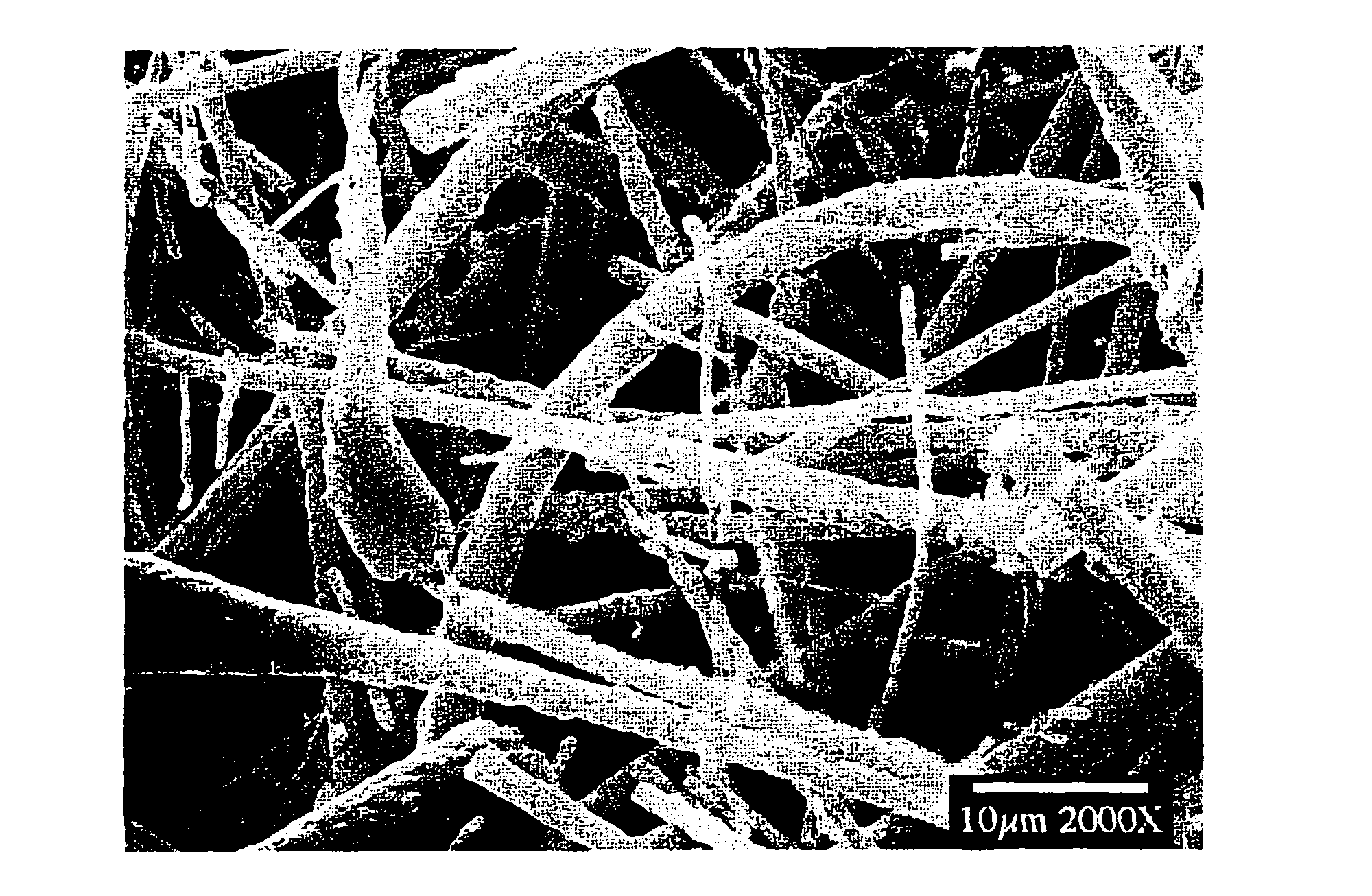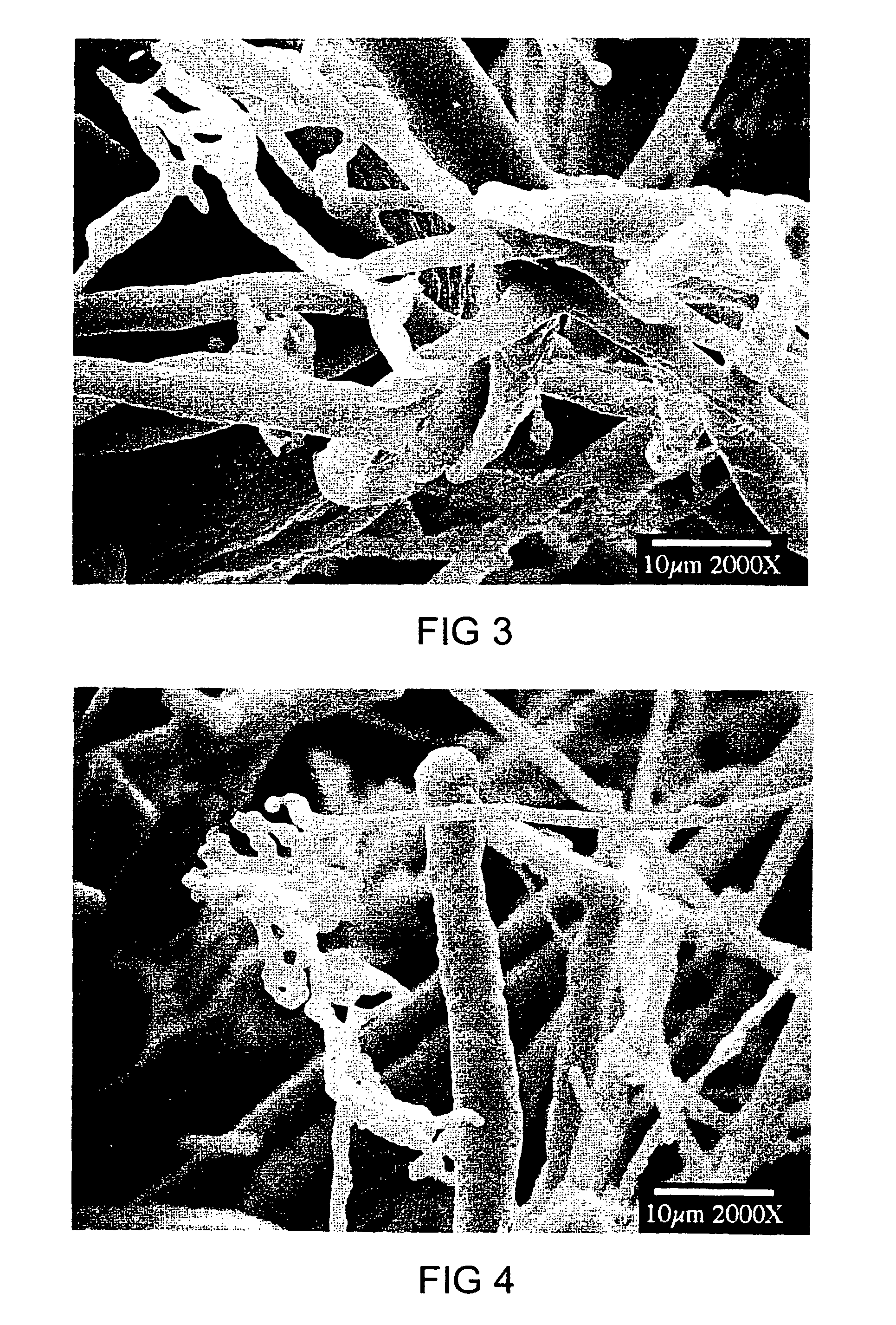Inorganic fiber
a technology of organic fibers and fibers, applied in the field of organic fibers, can solve the problems of fibers lacking strength or mechanical integrity, less mechanical integrity, and low temperature limit of use of these materials
- Summary
- Abstract
- Description
- Claims
- Application Information
AI Technical Summary
Benefits of technology
Problems solved by technology
Method used
Image
Examples
example 1
Calcium-aluminate fibers were produced from a melt of ingredients containing about 40 weight percent calcia and about 60 weight percent alumina by a fiber blowing process. A coating of sodium monophosphate was applied to the fibers by a spraying process.
A shrinkage pad was prepared by mixing the blown fibers, a phenolic binder, and water. The mixture of fibers, binder, and water was poured into a sheet mold and the water was allowed to drain through openings in the bottom of the mold. A 3 inch×5 inch test piece was cut from the pad and was used in the shrinkage testing. The length and width of the test pad was carefully measured. The test pad was then placed into a furnace and brought to a temperature of 1260° C. for 24 hours. After heating for 24 hours, the test pad was removed from the test furnace and cooled. After cooling, the length and width of the test pad were measured again. The linear shrinkage of the test pad was determined by comparing the “before” and “after” dimensiona...
example 2
Calcium-aluminate fibers were produced from a melt of ingredients containing about 37 weight percent calcia and about 63 weight percent alumina by a fiber blowing process. A coating of sodium monophosphate was applied to the fibers by a spraying process. The phosphate coated fibers were formed into a test pad and the shrinkage characteristics of the test pad were determined according to the methods described for Example 1. The test pad comprising fibers manufactured from a melt of ingredients including about 37 weight percent calcia and about 63 weight percent alumina and which were coated with sodium monophosphate exhibited a linear shrinkage of less than 5 percent after exposure to a temperature of 1260° C. for 24 hours.
Table I below includes a number of calcium-aluminate fibers produced in accordance with the present processes.
TABLE IExampleCaOAl2O3SiO2Fe2O3*P2O5A / C Ratio342.155.81.60.350.051.33432.7651.80.360.051.02532.164.61.60.351.182.01647.848.42.170.370.91.01735.961.91.60.34...
example 26
Control
A calcium-aluminate fiber comprising the fiberization product of 43.5 weight percent calcia, 54.8 weight percent alumina was tested for stability in deionized water. 10 grams of the calcium-aluminate fiber was added to 250 ml of deionized water. The water solution containing the calcium-aluminate fibers was allowed to sit for 1 hour. The deionized water severely degraded to the calcium-aluminate fiber, leaving only a small quantity of non-fibrous residue in the water solution.
PUM
| Property | Measurement | Unit |
|---|---|---|
| temperature | aaaaa | aaaaa |
| temperatures | aaaaa | aaaaa |
| weight percent | aaaaa | aaaaa |
Abstract
Description
Claims
Application Information
 Login to View More
Login to View More - R&D
- Intellectual Property
- Life Sciences
- Materials
- Tech Scout
- Unparalleled Data Quality
- Higher Quality Content
- 60% Fewer Hallucinations
Browse by: Latest US Patents, China's latest patents, Technical Efficacy Thesaurus, Application Domain, Technology Topic, Popular Technical Reports.
© 2025 PatSnap. All rights reserved.Legal|Privacy policy|Modern Slavery Act Transparency Statement|Sitemap|About US| Contact US: help@patsnap.com



